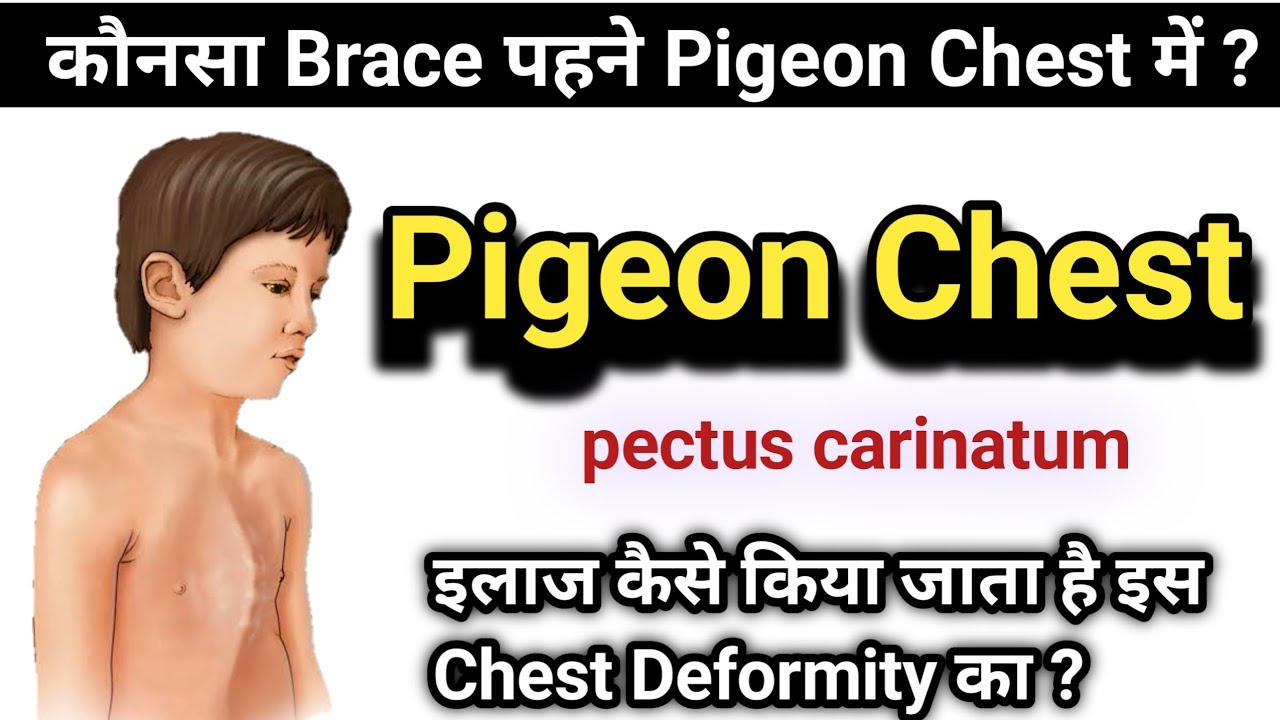Pigeon chest, also known as pectus carinatum
It is a deformity of the chest characterized by a protrusion of the sternum (breastbone) and the adjacent ribs, causing the chest to have a pronounced outward appearance.
It is called “pigeon chest” due to the similarity in shape to the breast of a pigeon.
Pectus carinatum is considered a congenital condition, meaning it is present at birth.
It occurs when there is an abnormal growth of the rib cartilage, leading to an outward displacement of the sternum.
The exact cause of pectus carinatum is not well understood, but it may be related to genetic factors or abnormal development during fetal growth.
The severity of pigeon chest can vary from mild to severe, and it may become more noticeable during adolescence when growth spurts occur.
In some cases, pectus carinatum is purely a cosmetic concern.
while in others, it can cause physical symptoms such as chest pain, shortness of breath, or decreased exercise tolerance.
Pectus carinatum diagnosis
The diagnosis of pigeon chest, or pectus carinatum, typically involves a physical examination by a healthcare professional, such as a pediatrician or a thoracic surgeon.
The diagnosis may include the following steps:
Medical History:
The doctors will start by asking about the individual’s medical history, including any symptoms they may be experiencing and when they first noticed the chest deformity.
Physical Examination:
The doctors will conduct a thorough physical examination, specifically focusing on the chest area.
They will observe the shape of the chest, palpate (feel) the sternum and ribs, and assess for any associated physical symptoms.
Imaging Studies:
In some cases, imaging studies may be order to further evaluate the chest deformity and assess its severity. Common imaging techniques used include:
X-ray:
A chest X-ray can provide a detailed image of the chest wall, allowing the healthcare provider to visualize the position of the sternum, ribs, and other structures.
Computed Tomography (CT) Scan:
A CT scan provides more detailed cross-sectional images of the chest, which can help in assessing the exact shape and position of the chest wall.
Pulmonary Function Tests (PFTs):
In individuals with severe pectus carinatum, pulmonary function tests may be perform to evaluate lung function and assess if the chest deformity is impacting respiratory function.
Based on the findings from the medical history, physical examination, and any additional tests, the healthcare provider will make a diagnosis of pigeon chest or pectus carinatum.
The severity of the condition may also be classified based on specific measurements or indices determined from imaging studies.
It’s important to consult with a healthcare professional for an accurate diagnosis and to discuss appropriate treatment options tailored to the individual’s specific condition and needs.
Pigeon chest Physiotherapy Treatment
Physiotherapy can play a supportive role in the treatment of pigeon chest (pectus carinatum) by focusing on strengthening the muscles surrounding the chest wall and improving posture.
While physiotherapy alone may not correct the deformity, it can help alleviate associated symptoms and improve overall chest function.
Here are some physiotherapy treatment approaches that may be use:
Breathing Exercises:
Proper breathing techniques can help individuals with pigeon chest optimize their lung capacity and improve respiratory function.
A physiotherapist can teach deep breathing exercises and techniques to help expand the chest and strengthen the respiratory muscles.
Posture Correction:
Poor posture can exacerbate the appearance and symptoms of pigeon chest.
Physiotherapists can provide guidance on maintaining proper posture during daily activities and exercises.
They may recommend exercises to strengthen the muscles of the back, shoulders, and core to support an improved posture.
Chest Stretching and Mobilization:
Specific stretching exercises and mobilization techniques can be help to increase flexibility and mobility in the chest area. This can help reduce discomfort and improve the range of motion in the chest wall.
Core and Upper Body Strengthening:
Strengthening exercises targeted at the core muscles and upper body can help improve overall posture, chest stability, and muscle balance. Physiotherapists can recommend exercises such as shoulder blade squeezes, push-ups, planks, and exercises using resistance bands.
Manual Therapy:
Hands-on techniques such as soft tissue mobilization, myofascial release, or joint mobilization may be use by a physiotherapist to address tightness, muscle imbalances, or restrict movement in the chest area.
Education and Lifestyle Modifications:
Physiotherapists can provide education on proper body mechanics, lifting techniques, and ergonomic adjustments
To minimize strain on the chest and promote optimal posture in daily activities.
It is important to note that the effectiveness of physiotherapy in treating pigeon chest may vary depending on the severity of the condition and individual factors.
Physiotherapy is often used as a complementary approach alongside
other treatments such as bracing or surgery, especially in moderate to severe cases.
Consulting with a physiotherapist or healthcare professional who specializes in chest wall deformities
And can help tailor a physiotherapy program to meet individual needs and goals.
Read our intresting article on funnel chest kindly click here

Sir meri pigeon chest theek ho jaye
Sir meri pigeon chest theek ho jaye
go towards nearest multispeciality hospital
My chest is seems tobe up and my lung chipak se gaye hai
plz consult with chest physcian near you